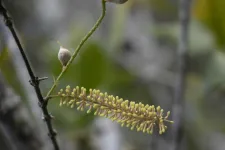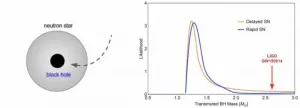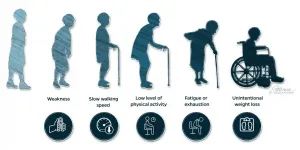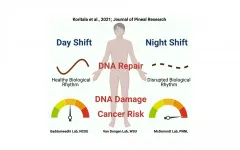INFORMATION:
This project is funded by Hort Innovation, the Department of Agriculture and Fisheries Queensland and The University of Queensland.
Contacts: Professor Robert Henry, robert.henry@uq.edu.au, +61 7 3346 2445; Denise Bond, Macadamia Conservation Trust, Denise.Bond@macadamias.org, +61 (0) 488 432 226; QAAFI Communications, Margaret Puls, m.puls@uq.edu.au, +61 (0) 419 578 356.
Images available via DropBox: https://www.dropbox.com/sh/2yqwnurtg5e9h8p/AABv9RHMQ41rRqp9tIF15n-na?dl=0
Critically endangered macadamia species becomes a plant supermodel
2021-03-08
(Press-News.org) One of the world's rarest tree species has been transformed into a sophisticated model that University of Queensland researchers say is the future of plant research.
"Macadamia jansenii is a critically endangered species of macadamia which was only described as a new species in 1991," said Robert Henry, Professor of Innovation at the Queensland Alliance for Agriculture and Food Innovation (QAAFI).
"It grows near Miriam Vale in Queensland and there are only around 100 known trees in existence."
However, with funding from Hort Innovation's Tree Genomics project, and UQ's Genome Innovation Hub Macadamia jansenii has now become the world's most sophisticated plant research model.
Professor Henry said Macadamia jansenii was probably the best studied species on the planet in terms of its genetics.
"Macadamia jansenii has potentially become the model for assembling all future plant genomes," he said.
Professor Henry said the entire jansenii species grows in one small area. "This means we have the potential to study the diversity of the whole species," he said.
"This is unusual, even for rare or endangered plants - it means we can get a lot of information about how rare plant species survive the impact of small population size and the associated genetic bottleneck.
Professor Henry said that particular characteristics of Macadamia jansenii made it useful for improving the technology and methodology for sequencing and assembling plant genomes.
"We investigated the different sequencing technologies, all the different software and algorithms that you can use in genomic sequencing, and then applied each of them to the same sample to find out what worked best," he said.
"It's a long, complex and very expensive process, so we wanted to use the latest technology to improve its efficiency."
The Genome Innovation Hub's Ms Valentine Murigneux analysed the genome sequence and QAAFI researchers then assembled all 14 chromosomes for the species, in collaboration with laboratories in the United States. This work was published in GigaScience.
Professor Henry said the work is of great interest globally.
"High quality genome sequences are proving much more useful than rough draft sequences with less errors and better outcomes for plant breeding," he said.
Macadamia jansenii was first brought to the attention of Western plant scientists in 1983, by Ray Jansen, a canefarmer and skilled amateur botanist from a South Kolan in Central Queensland.
Ms Denise Bond, Executive Officer of the Macadamia Conservation Trust said since 2018 about 60 new mature Macadamia jansenii trees have been located, although a quarter of these were destroyed in the bush fires of 2019.
"We very much welcome the genomic research on Macadamia jansenii as it will help prioritise future conservation efforts, although right now the most critical thing is to protect the remaining wild trees in their original habitat," Ms Bond said.
She said the remaining three macadamias species - M. ternifolia, M. tetraphylla and M. integrifola - were listed on the International Union for Conservation of Nature's Red List of Threatened Species in 2020.
"This is a wake-up call to Australia to take better care of our native macadamia species."
Professor Henry said all four macadamia species - tetraphylla, integrifolia, ternifolia and jansenii have now undergone the same analysis.
"It is fitting this work has been developed in Queensland using the Macadamia genus - one of Australia's few additions to the world's food crops," he said
The macadamia genomic work forms part of a five-year project to develop detailed high quality genome sequencing for five of Australia's key horticultural tree crops - avocado, macadamia, mango, citrus and almond - which account for 80 percent of Australian horticulture tree crop value.
"The macadamia data we have generated has been fed through to a range of projects including research on sustainably intensifying tree crop production and breeding for key commercial attributes in macadamia production," Professor Henry said.
ELSE PRESS RELEASES FROM THIS DATE:
Algorithm helps artificial intelligence systems dodge "adversarial" inputs
2021-03-08
In a perfect world, what you see is what you get. If this were the case, the job of artificial intelligence systems would be refreshingly straightforward.
Take collision avoidance systems in self-driving cars. If visual input to on-board cameras could be trusted entirely, an AI system could directly map that input to an appropriate action -- steer right, steer left, or continue straight -- to avoid hitting a pedestrian that its cameras see in the road.
But what if there's a glitch in the cameras that slightly shifts an image by a few pixels? If the car blindly trusted so-called "adversarial inputs," it might take unnecessary and potentially dangerous action.
A new deep-learning algorithm developed by MIT researchers is designed to help machines ...
Targeted immunotherapy could boost radiotherapy response
2021-03-08
Cancers that are resistant to radiotherapy could be rendered susceptible through treatment with immunotherapy, a new study suggests.
Researchers believe that manipulating bowel cancers based on their 'immune landscape' could unlock new ways to treat resistant tumours.
Cancers can evolve resistance to radiotherapy just as they do with drugs.
The new study found that profiling the immune landscape of cancers before therapy could identify patients who are likely to respond to radiotherapy off the bat, and others who might benefit from priming of their tumour with immunotherapy.
Scientists at The Institute of Cancer Research, London, in collaboration with the University of Leeds and The Francis Crick ...
Someone to watch over AI and keep it honest - and it's not the public!
2021-03-08
The public doesn't need to know how Artificial Intelligence works to trust it. They just need to know that someone with the necessary skillset is examining AI and has the authority to mete out sanctions if it causes or is likely to cause harm.
Dr Bran Knowles, a senior lecturer in data science at Lancaster University, says: "I'm certain that the public are incapable of determining the trustworthiness of individual AIs... but we don't need them to do this. It's not their responsibility to keep AI honest."
Dr Knowles presents (March 8) a research paper 'The Sanction of Authority: Promoting Public Trust in AI' at the ACM Conference on Fairness, Accountability and Transparency (ACM FAccT).
The ...
Pay-off when solar cells can keep their cool
2021-03-08
Lowering the operating temperature of solar panels by just a few degrees can dramatically increase the electricity they generate over their lifetime, KAUST researchers have shown. The hotter a panel gets, the lower its solar power conversion efficiency (PCE) and the faster it will degrade and fail. Finding ways to keep solar panels cool could significantly improve the return on investment of solar-power systems.
The long-standing focus of photovoltaics (PV) research has been to improve solar modules' PCE and make solar power more cost-competitive than nonrenewable power ...
Establishing the origin of solar-mass black holes and the connection to dark matter
2021-03-08
What is the origin of black holes and how is that question connected with another mystery, the nature of dark matter? Dark matter comprises the majority of matter in the Universe, but its nature remains unknown.
Multiple gravitational wave detections of merging black holes have been identified within the last few years by the Laser Interferometer Gravitational-Wave Observatory (LIGO), commemorated with the 2017 physics Nobel Prize to Kip Thorne, Barry Barish, and Rainer Weiss. A definitive confirmation of the existence of black holes was celebrated with the 2020 physics Nobel Prize awarded to Andrea Ghez, Reinhard Genzel and ...
Strong and balanced T cell response: key to controlling SARS-CoV-2 infection without getting COVID-19
2021-03-08
To effectively fight off SARS-CoV-2, the immune system depends on both antibodies and T cells, a type of white blood cell, which work together to eradicate the virus. However, little was known about virus-specific T cells in asymptomatic patients.
"We now know that many people are getting infected with SARS-CoV-2 without realising it, as they stay healthy and don't develop any symptoms. These asymptomatic infections may provide the key to understanding how the immune system can control the virus without triggering pathological processes," explained Dr Nina Le Bert, Senior Research Fellow ...
Biological artificial organs like skin, vessels...now produced more easily
2021-03-08
A Korean research group has developed a technology that allows for the differentiation of stem cells into desired cell types, such as vascular mural cells or osteoblasts, without special pretreatment. This technology is expected to facilitate the production of artificial organs for preclinical studies or artificial tissues for transplants such as artificial skin and cardiac patches.
The Korea Institute of Science and Technology (KIST) announced that the research group led by Dr. Youngmee Jung of the Center for Biomaterials has developed a new cell co-culture platform ...
Researchers develop improved recycling process for carbon fibres
2021-03-08
In recent years there has been an increased focus on the circular economy and a heightened demand for products made of recyclable materials, however many materials can only be recycled so many times before they begin to wear out.
This is the case with carbon fibre reinforced polymer (CFRP) composites, non-biodegradable materials which, until now, have lacked a viable recycling method.
CRFP composites are present in products such as wind turbines, aeroplane parts, vehicles such as cars and ships, and everyday technology such as laptops and mobile ...
Multisystem failure regarding frailty necessitates multisystem intervention
2021-03-08
FOR IMMEDIATE RELEASE
Physicians understand frailty as a dysregulation among multiple systems in the body that make it less resilient and unable to recover completely when faced with a physical challenge such as injury or illness. "Defining frailty on a scientific level, however, has been a challenging task," explains END ...
Research offers insights on how night shift work increases cancer risk
2021-03-08
SPOKANE, Wash. - New clues as to why night shift workers are at increased risk of developing certain types of cancer are presented in a new study conducted at Washington State University Health Sciences Spokane. ...




